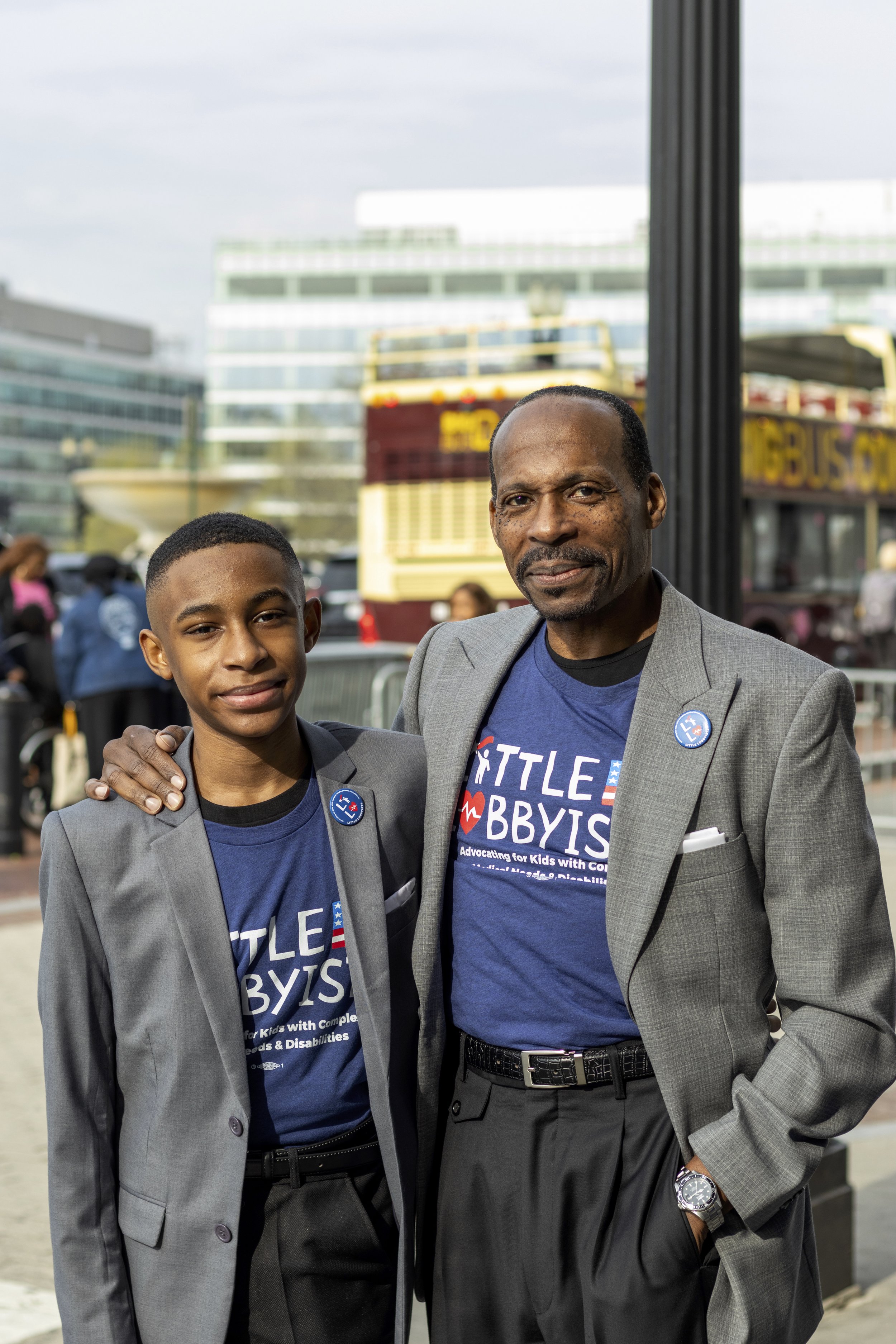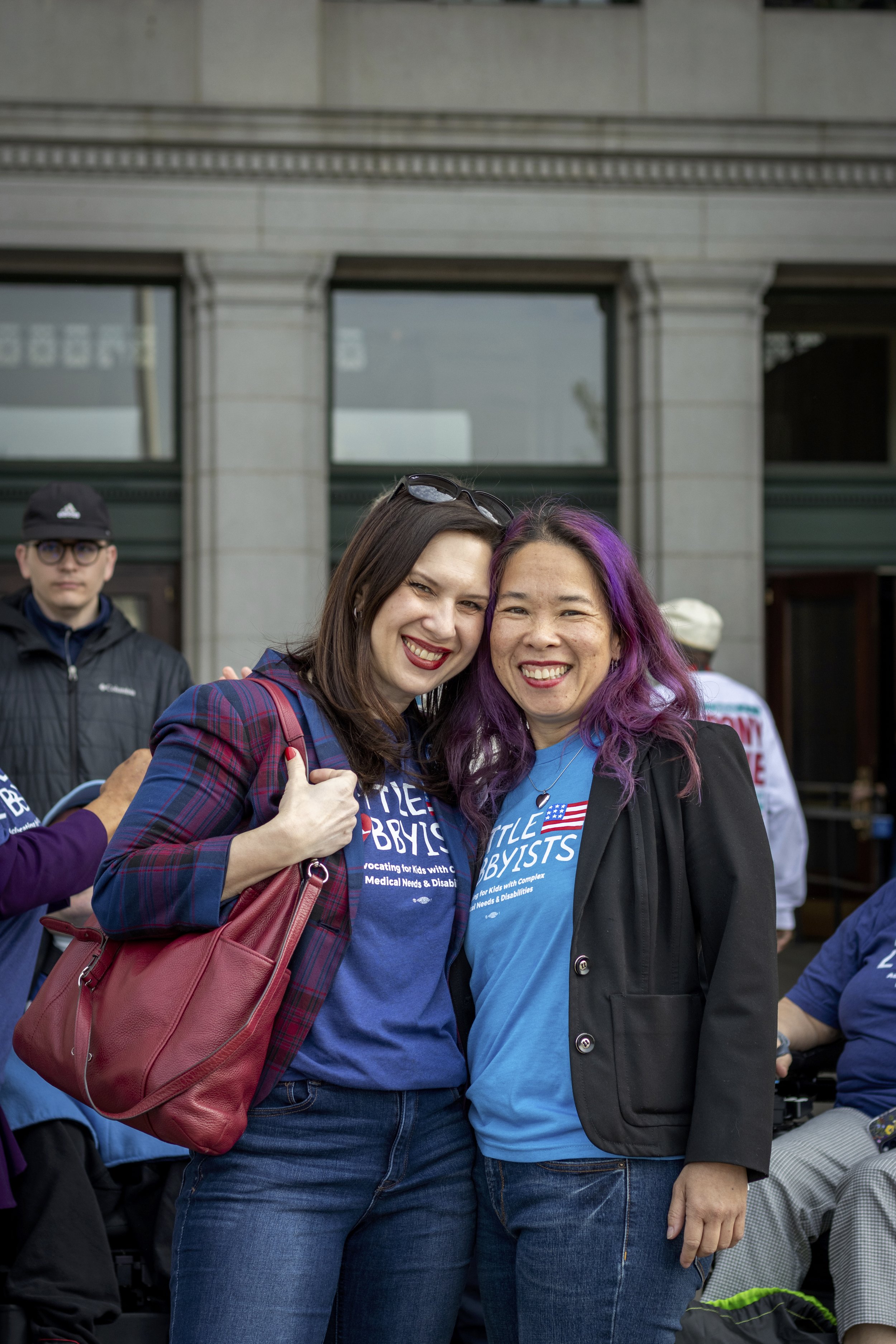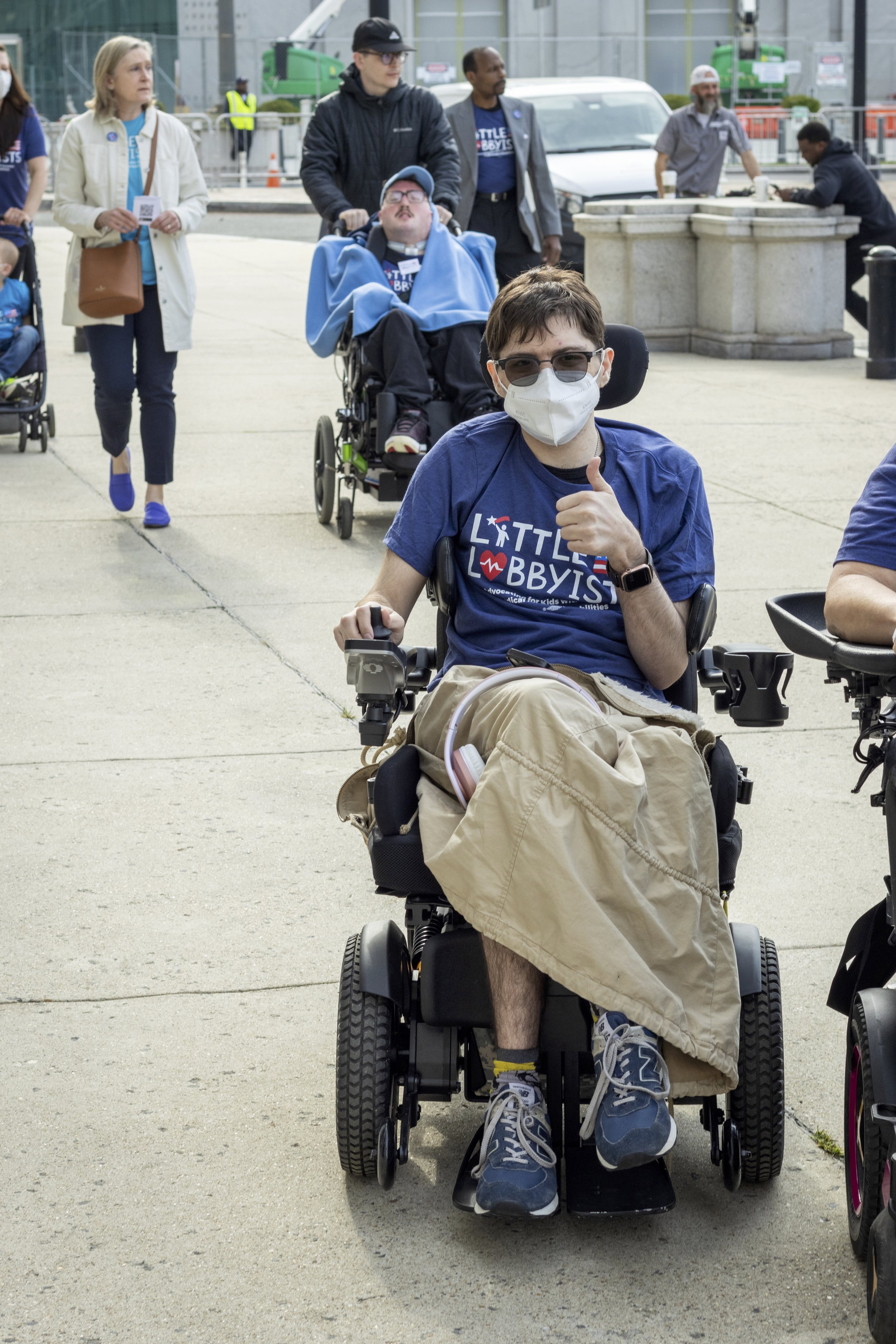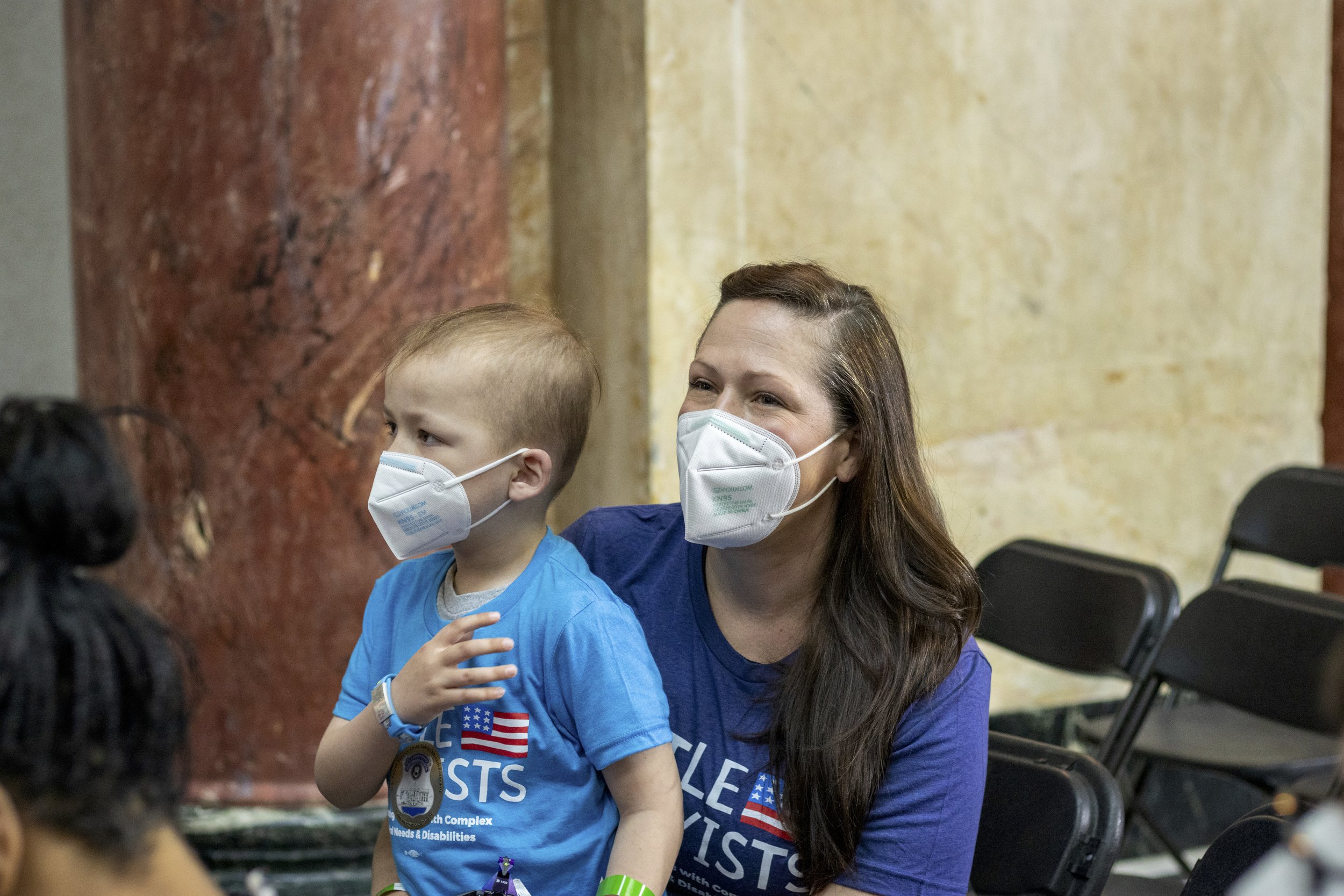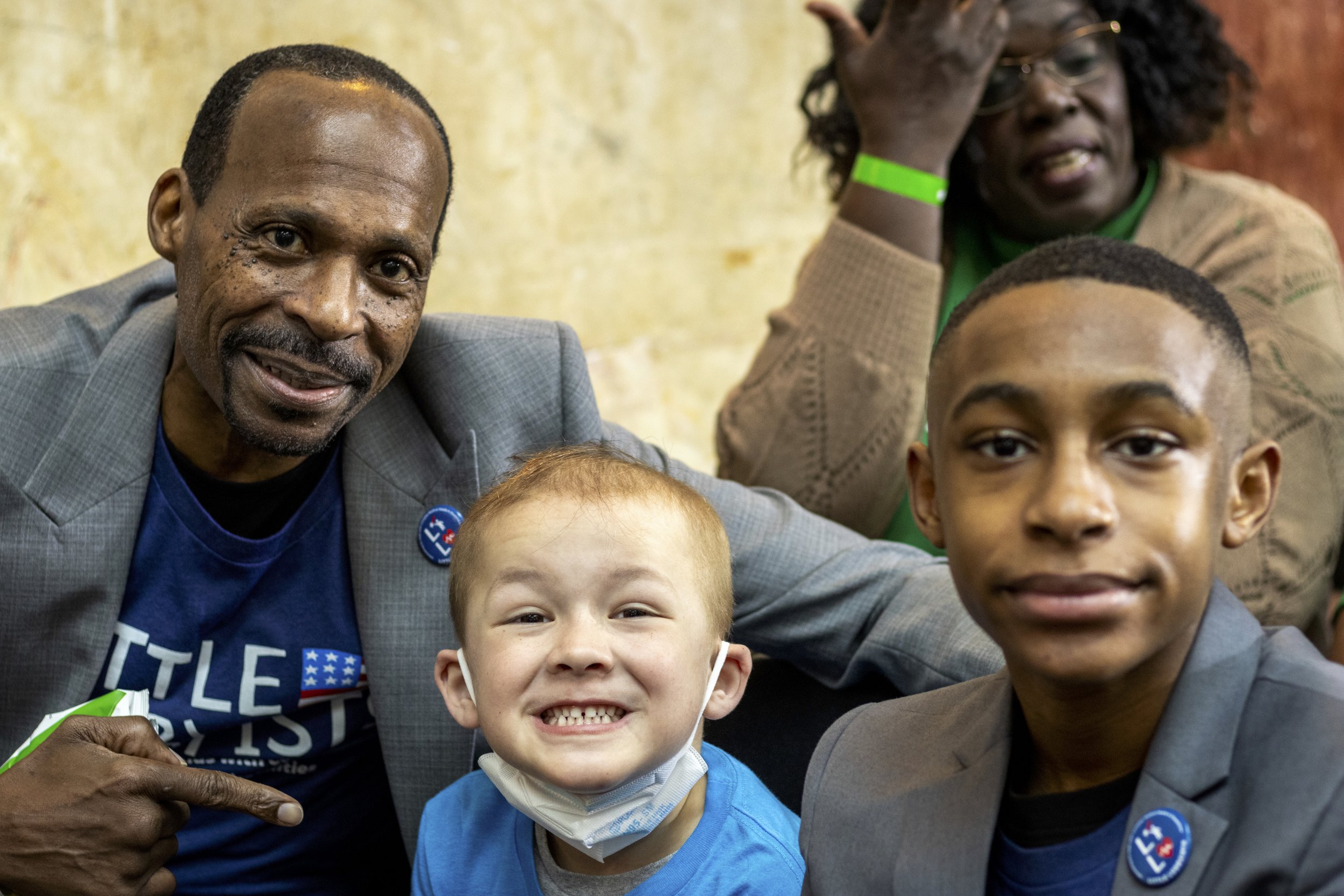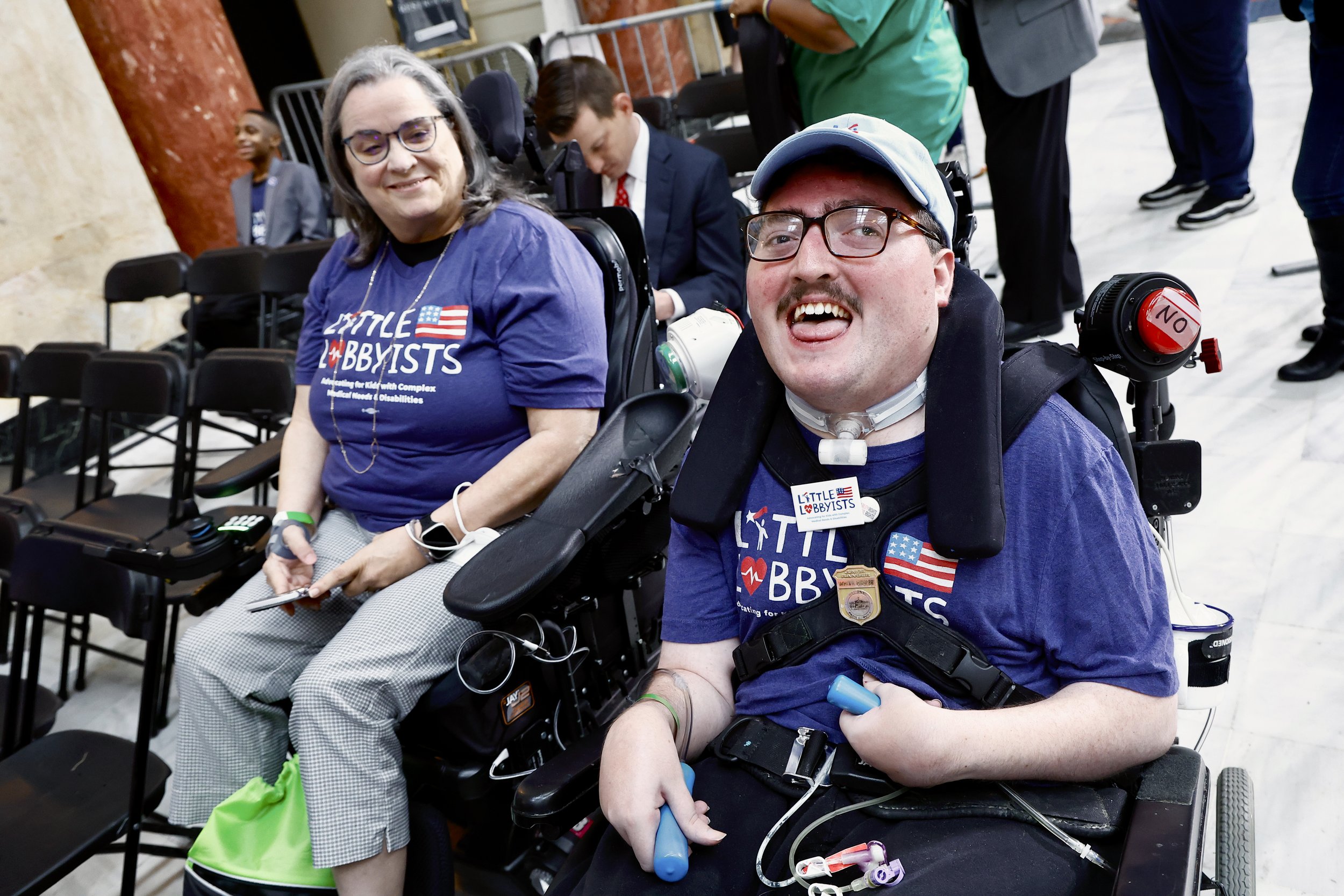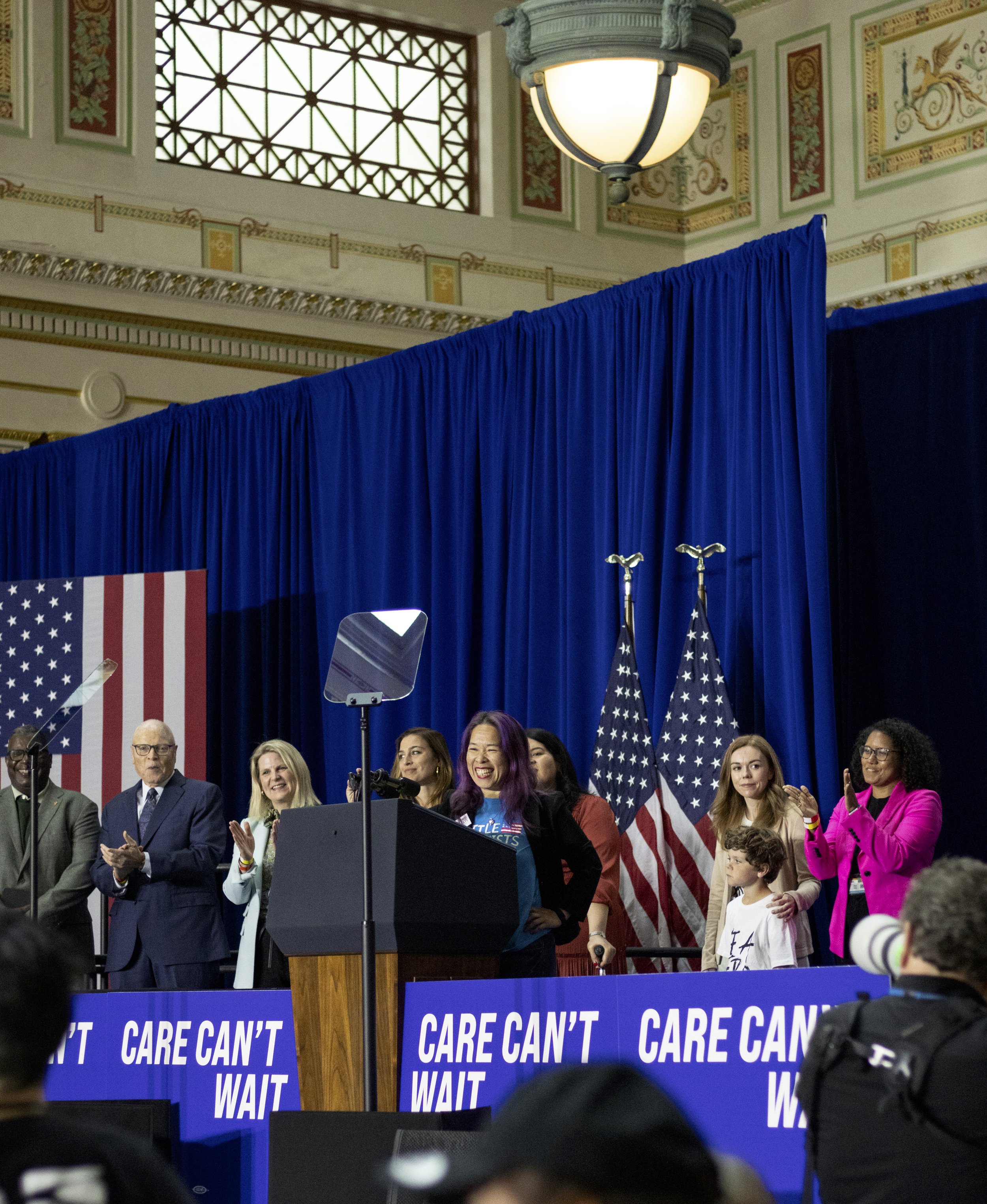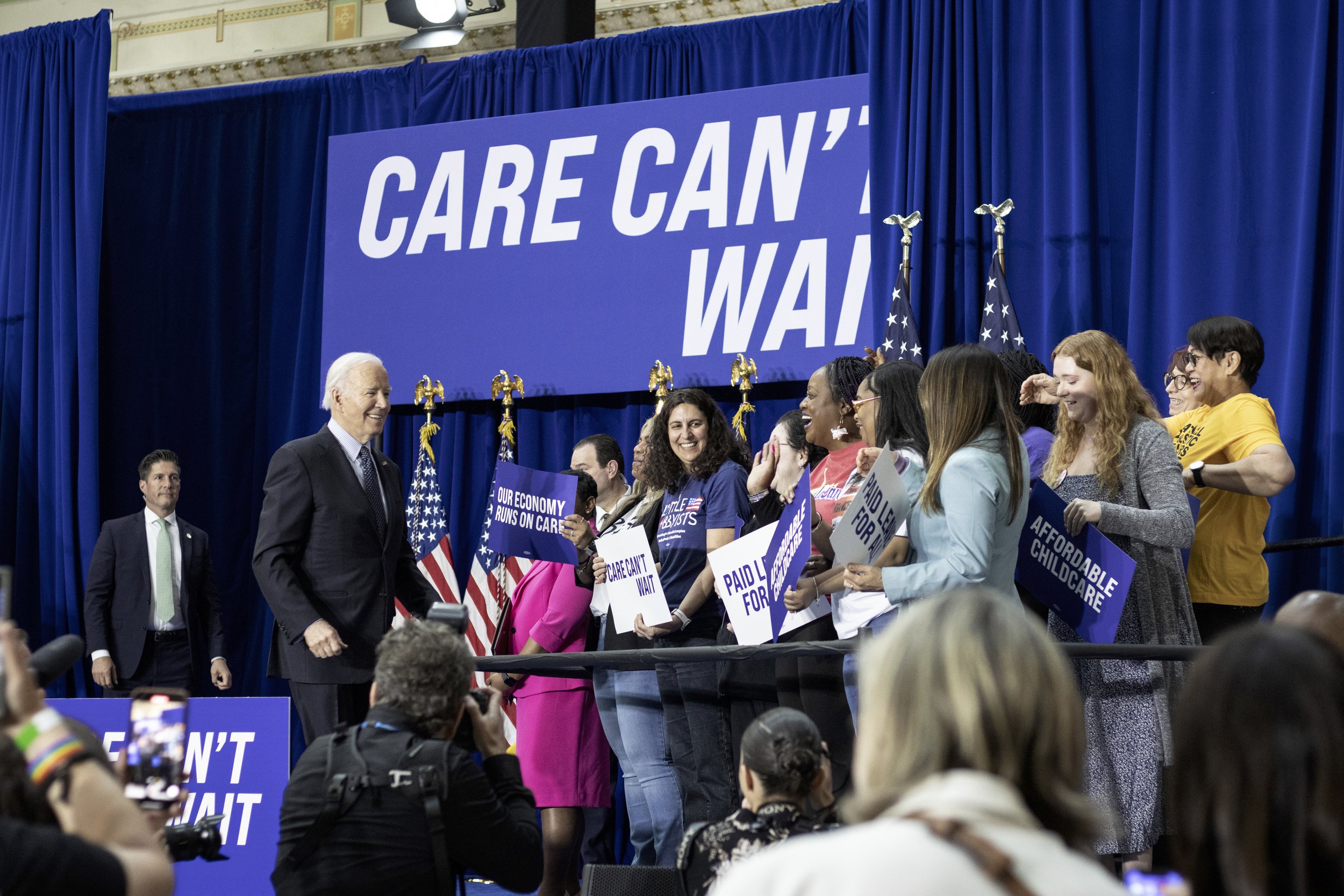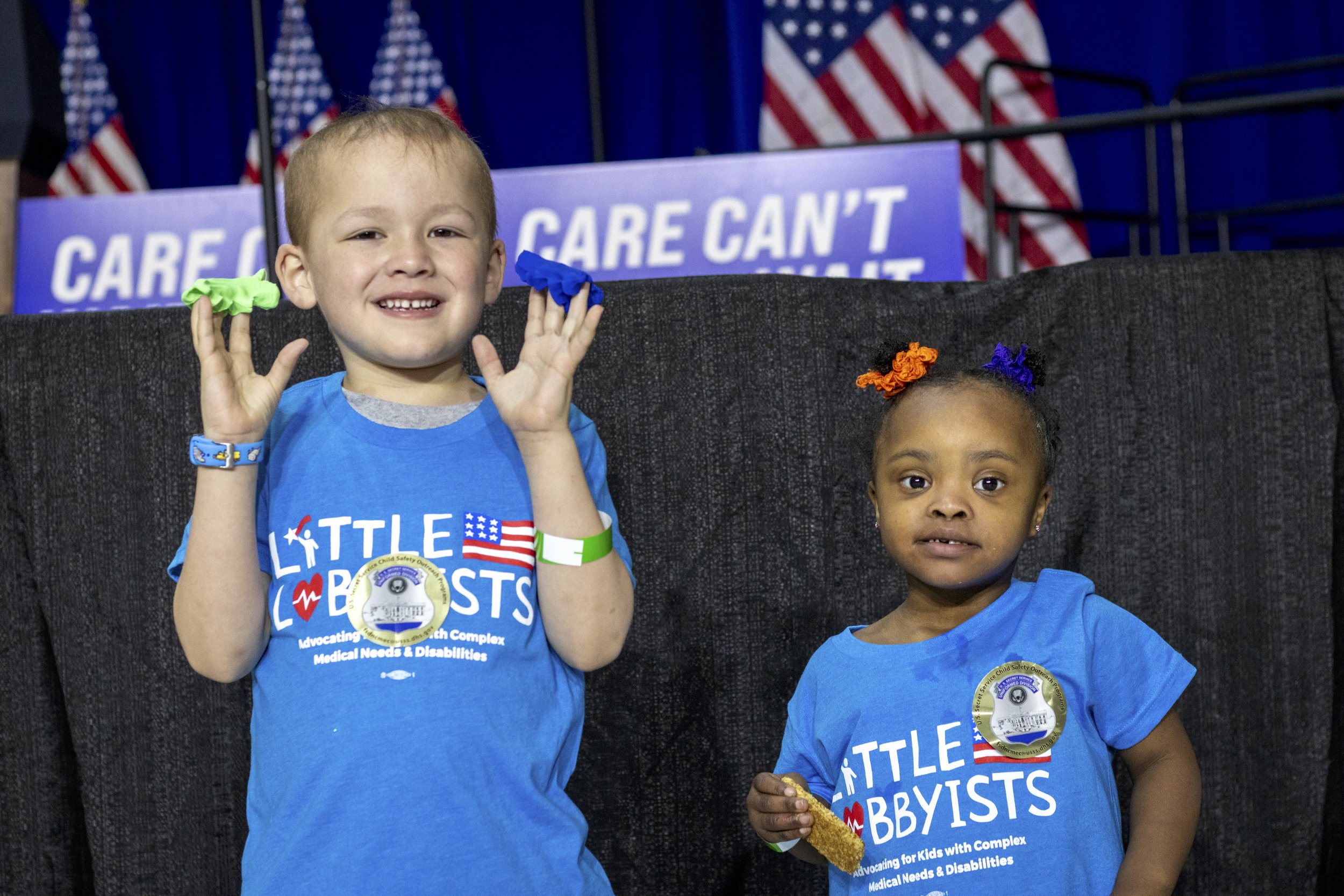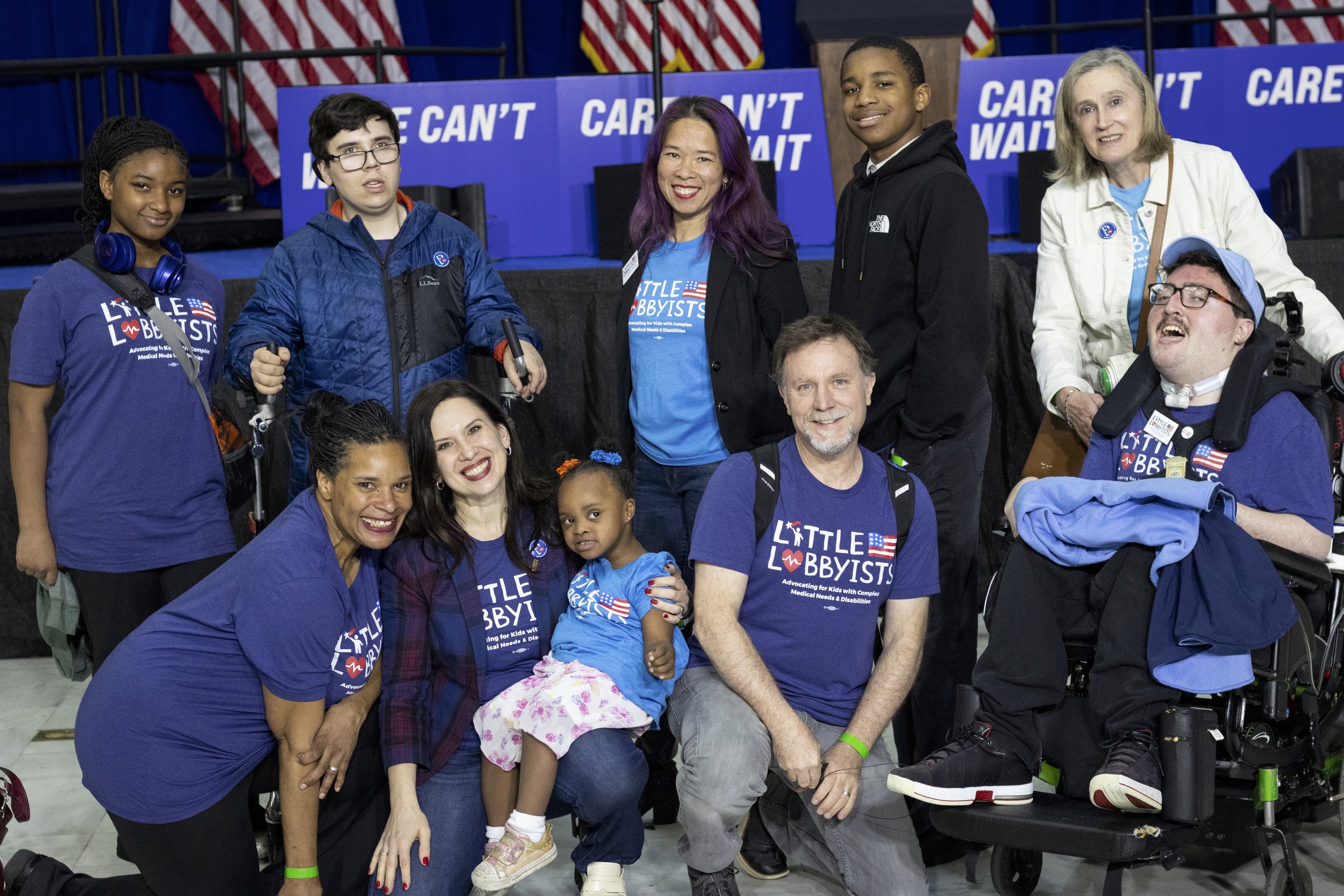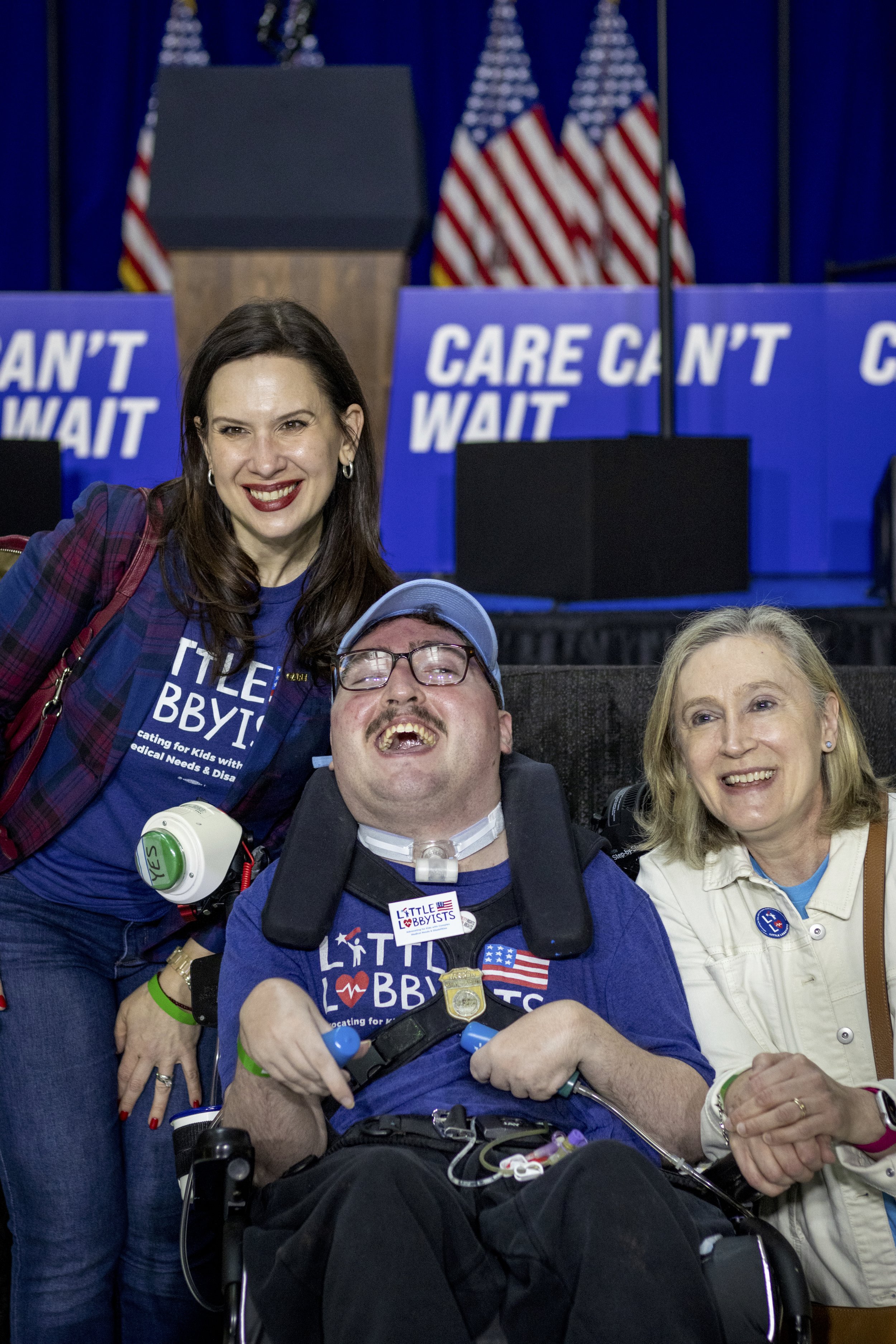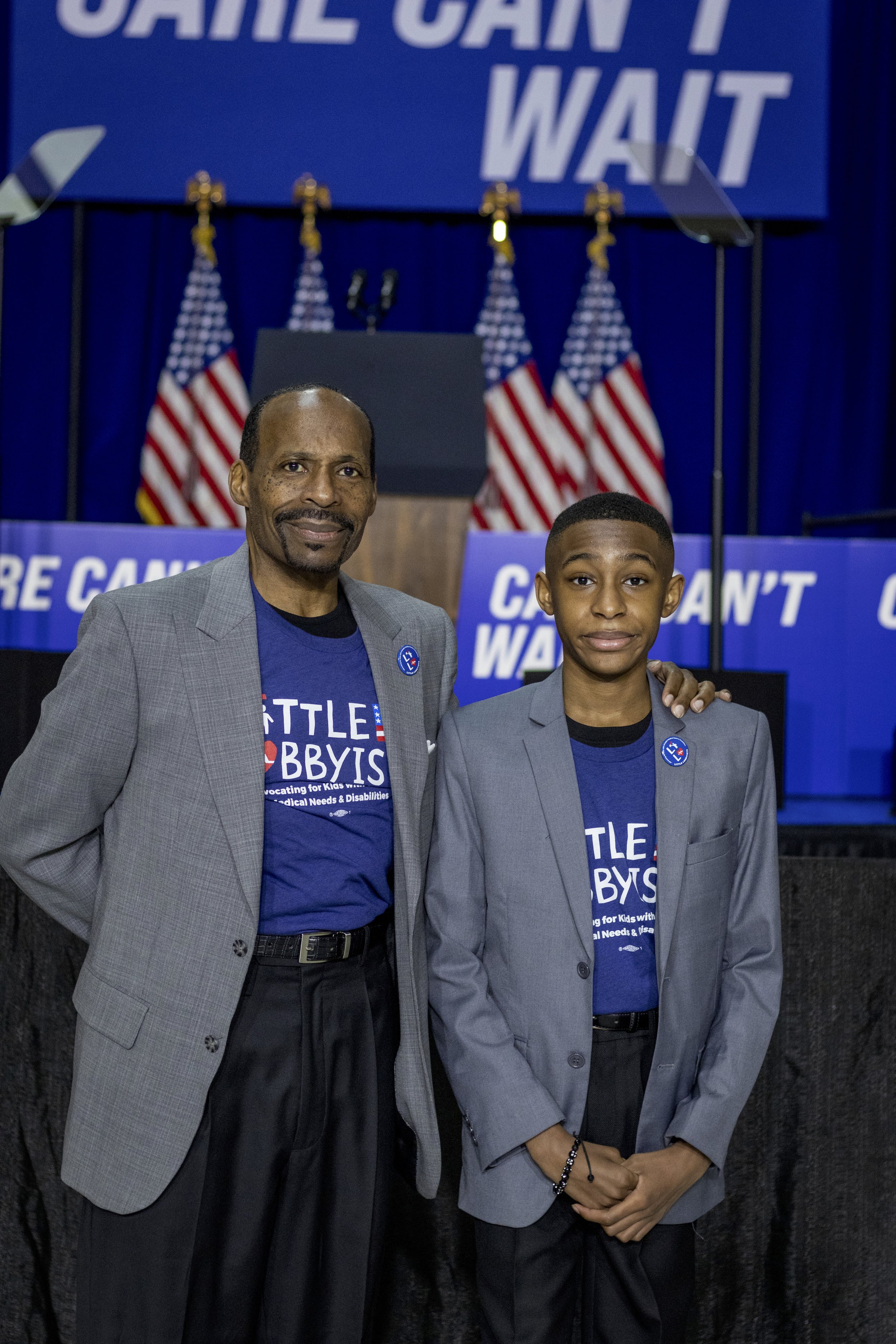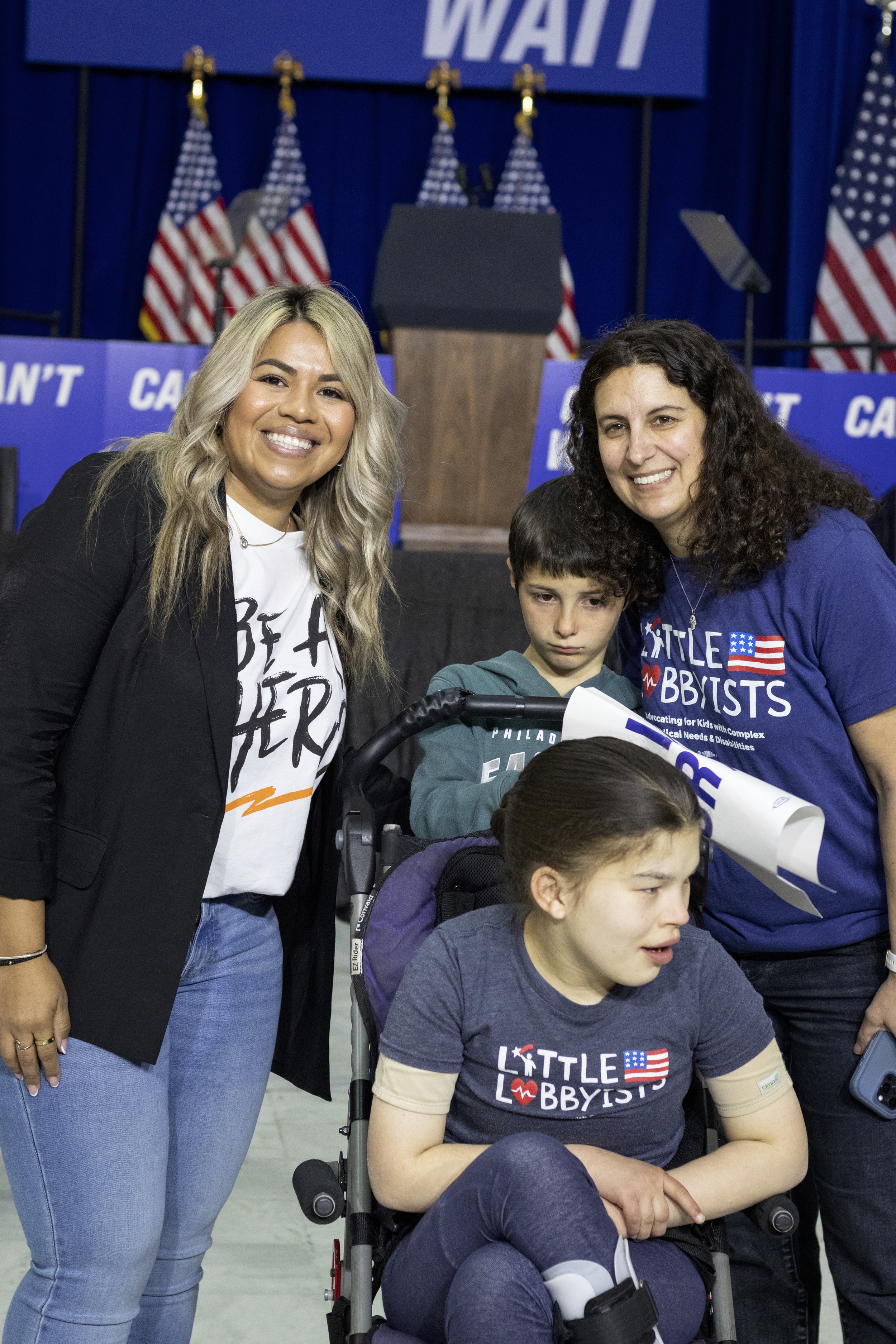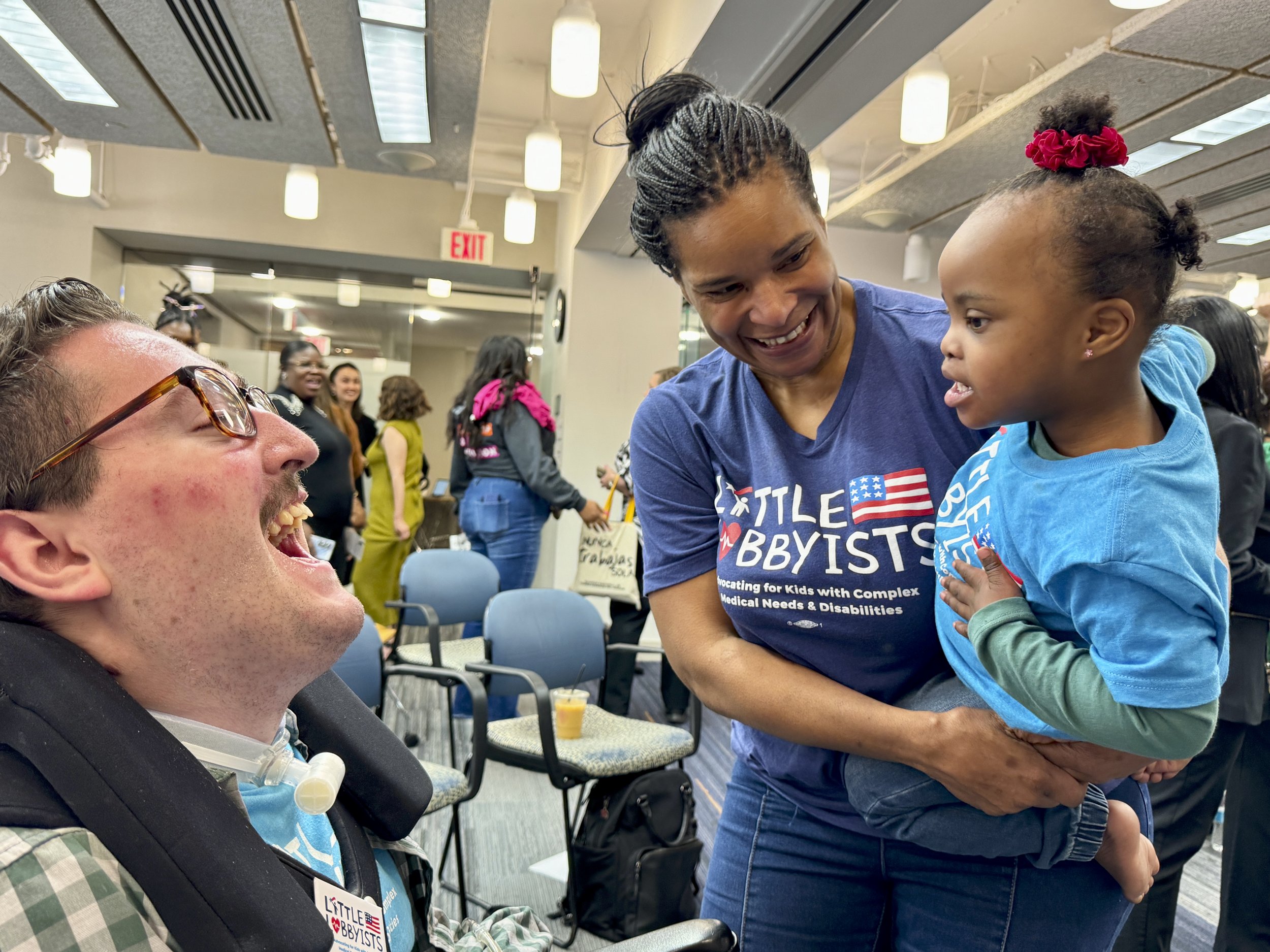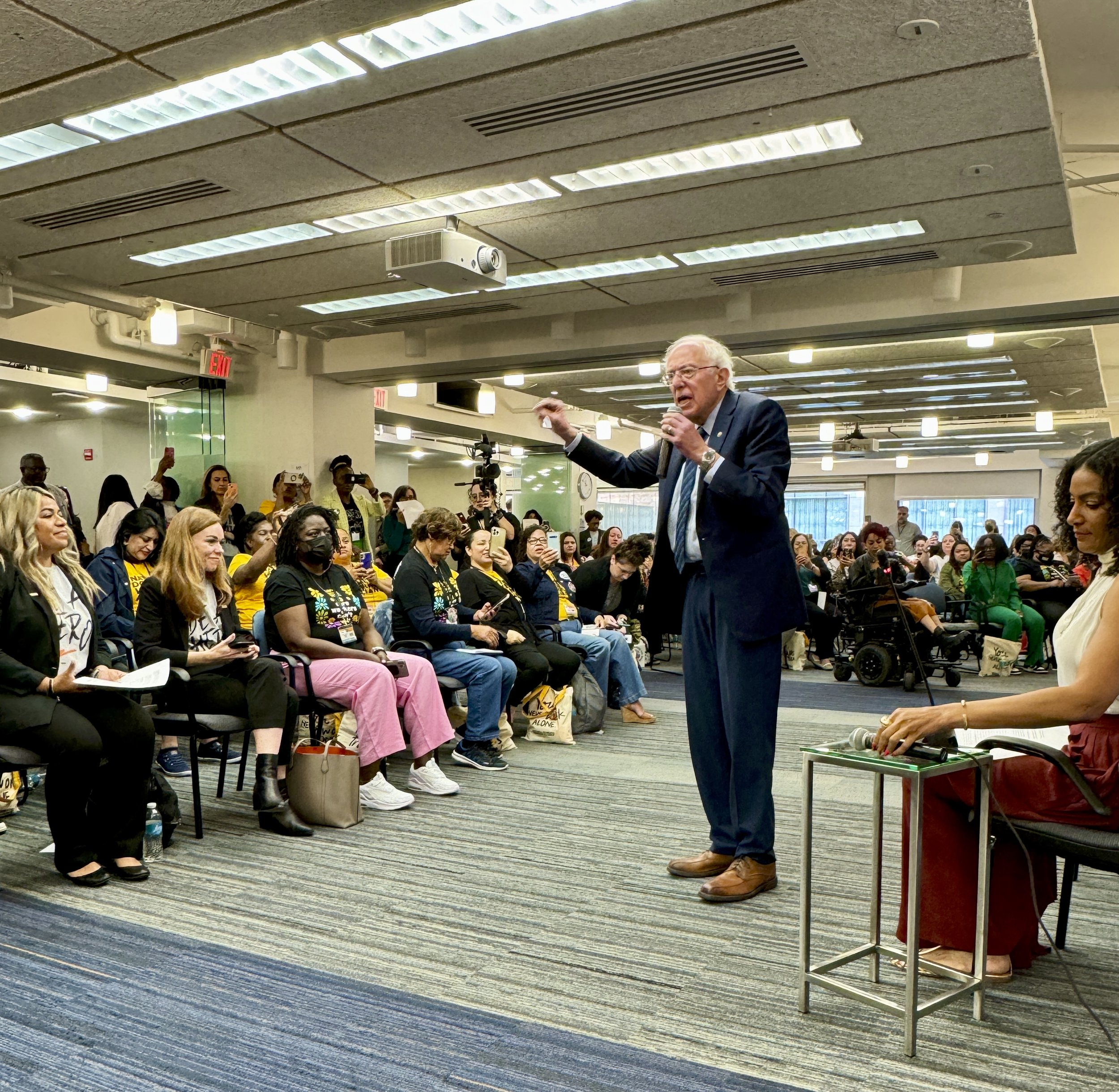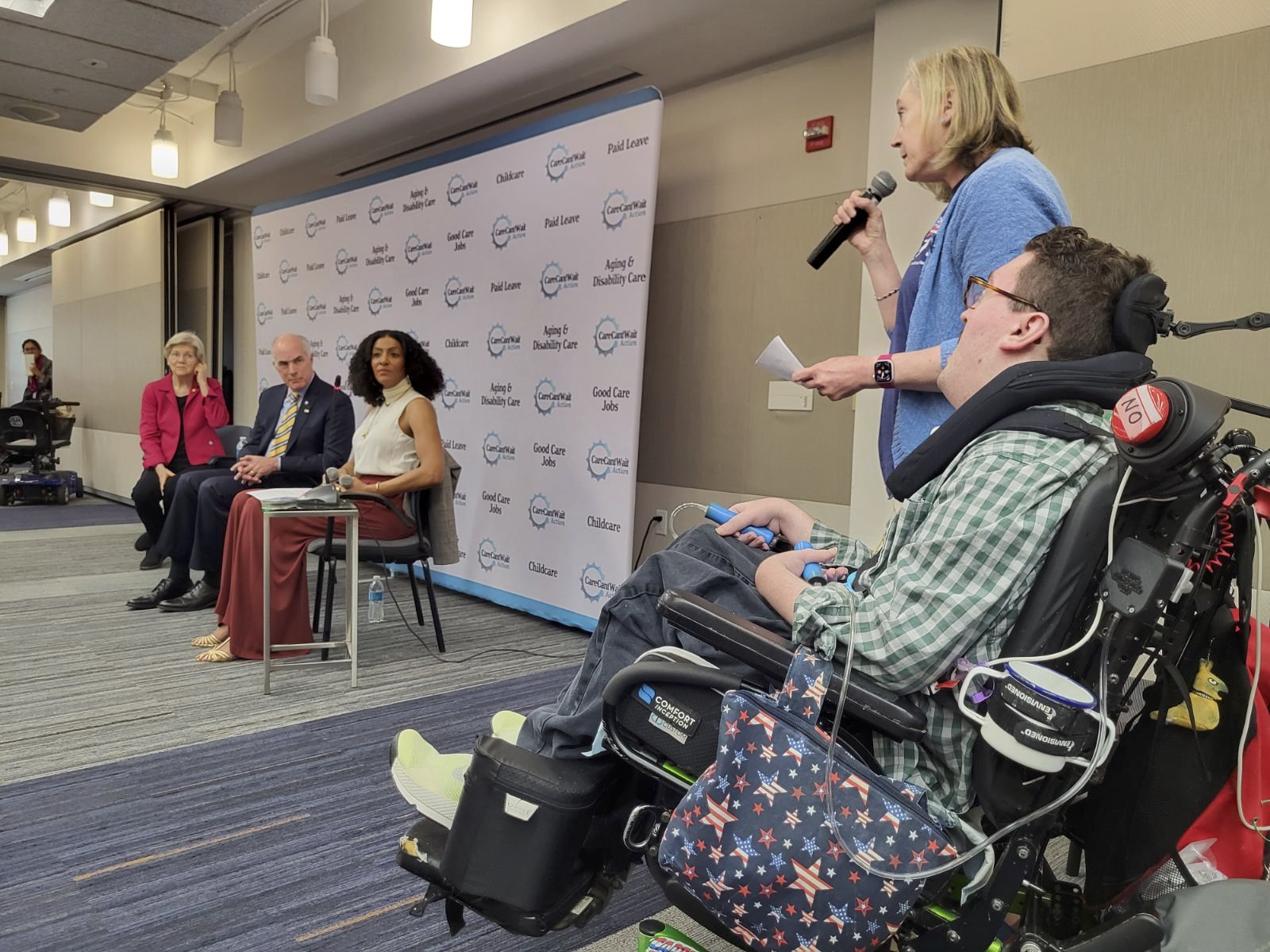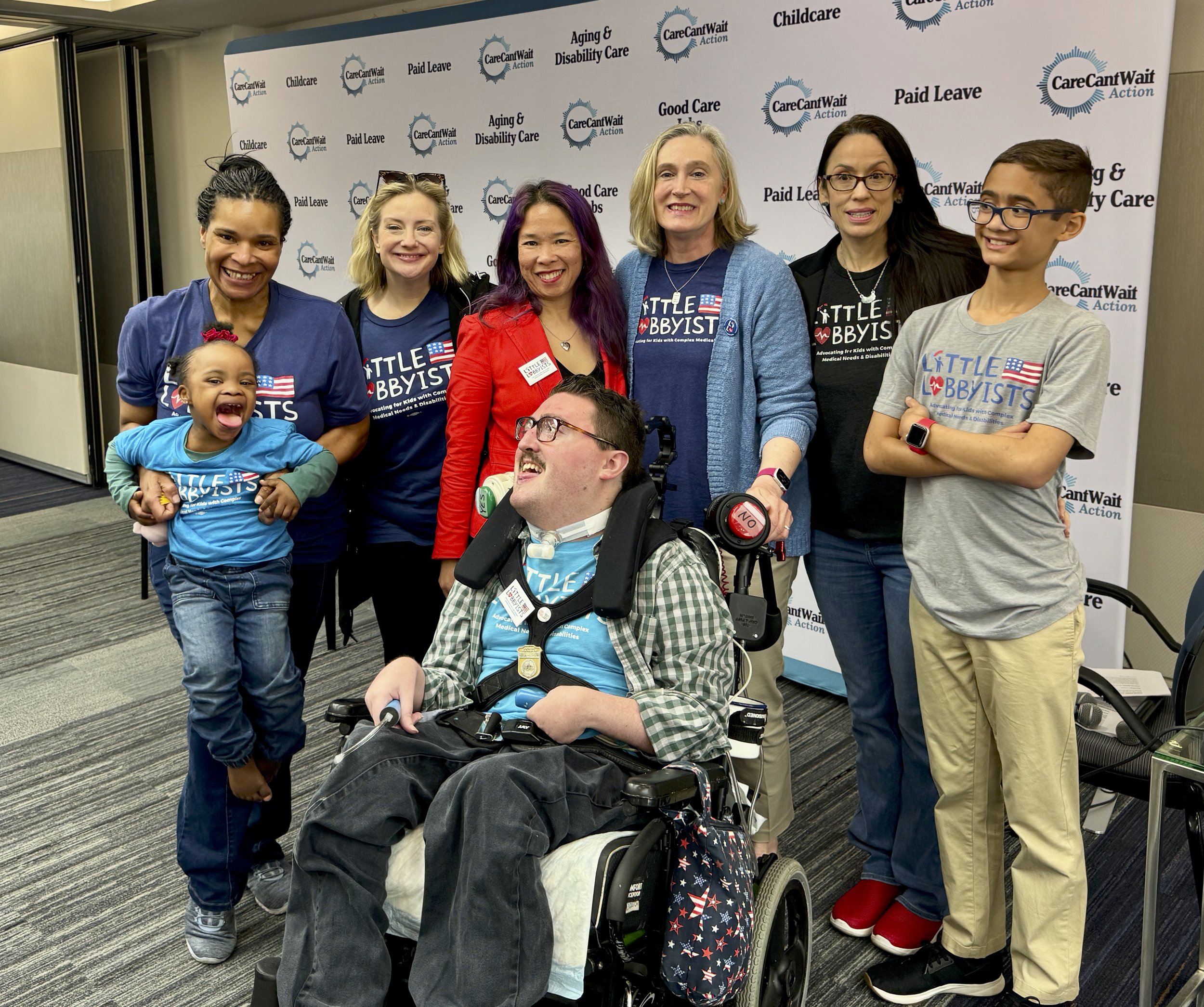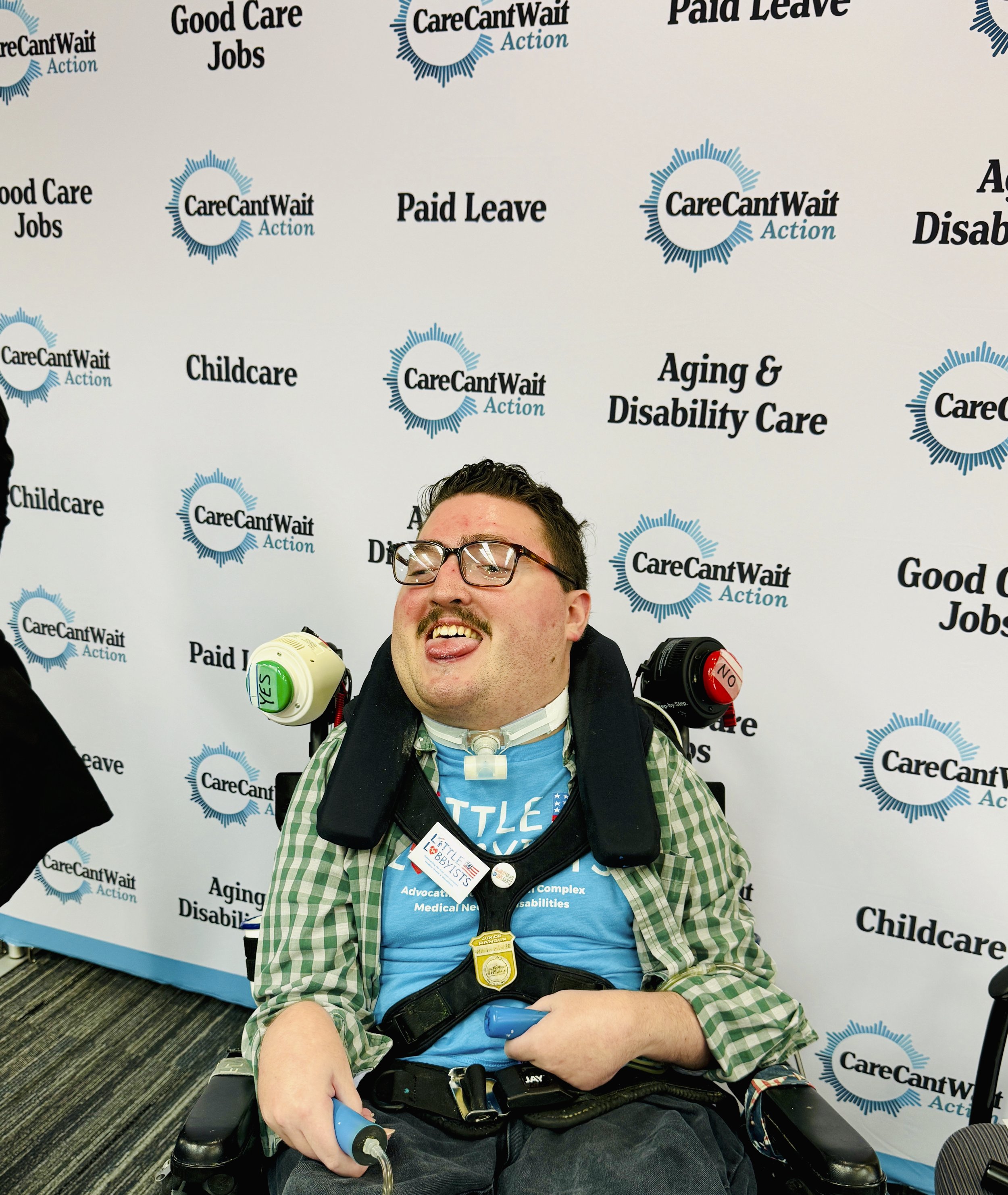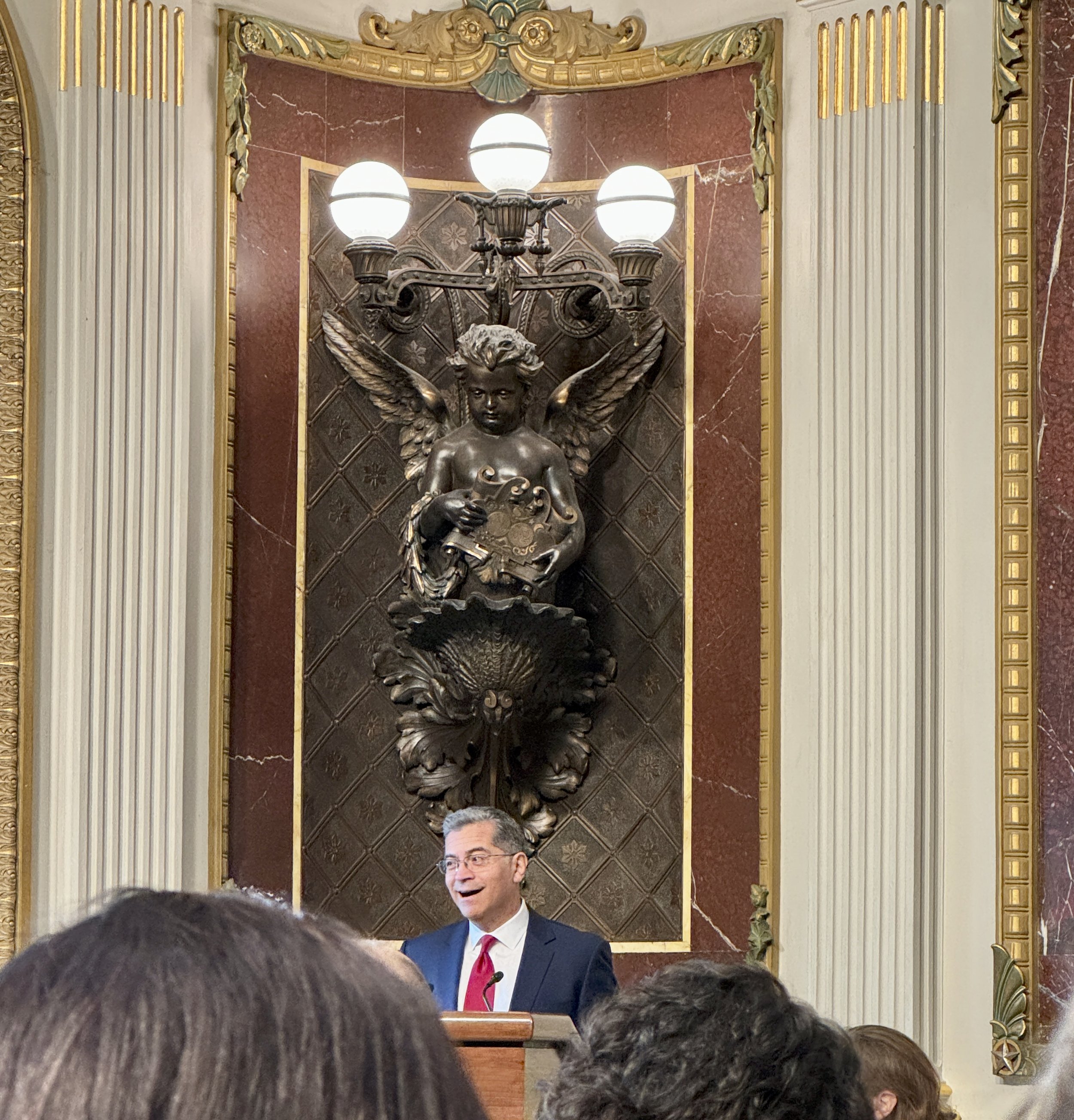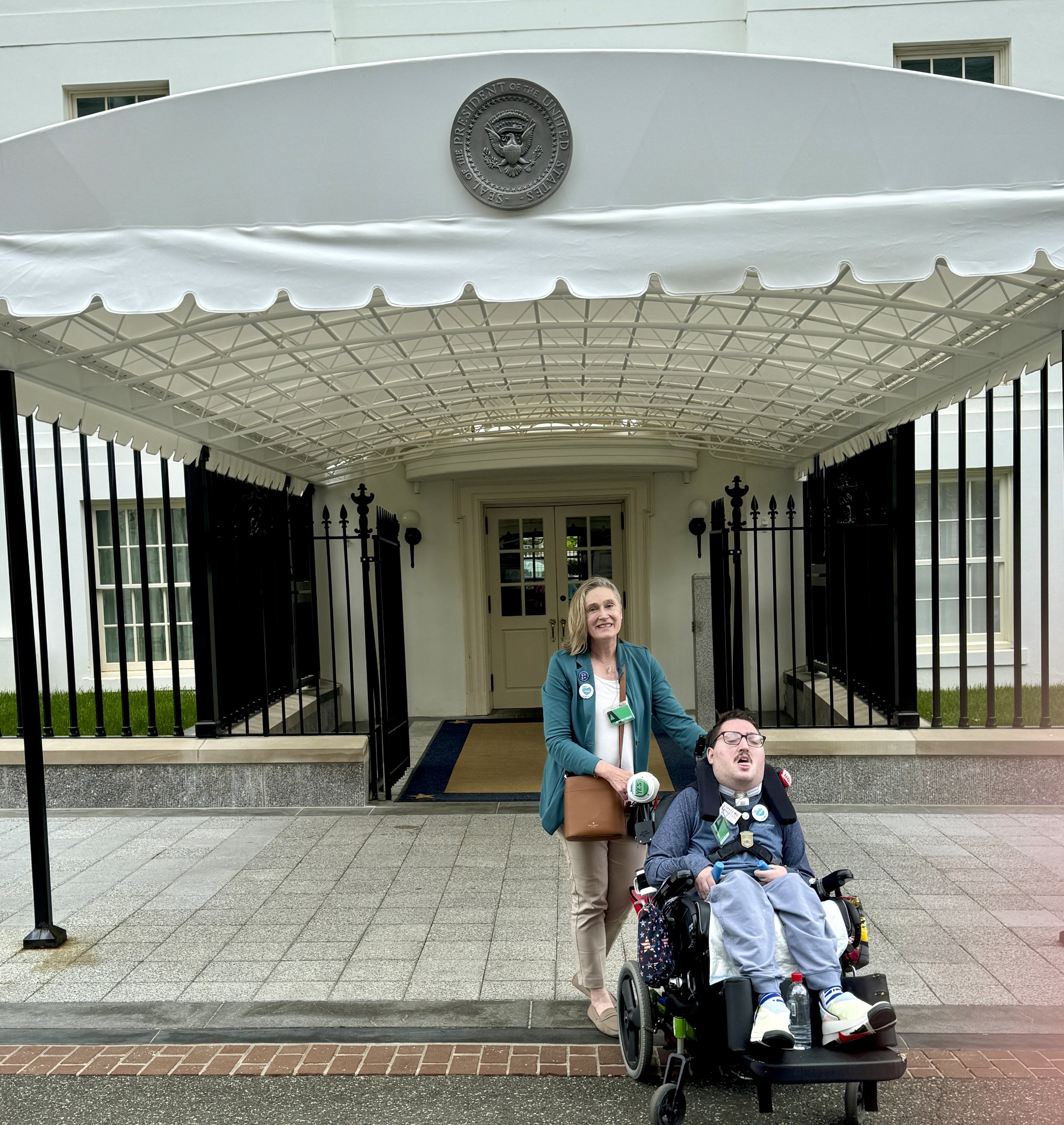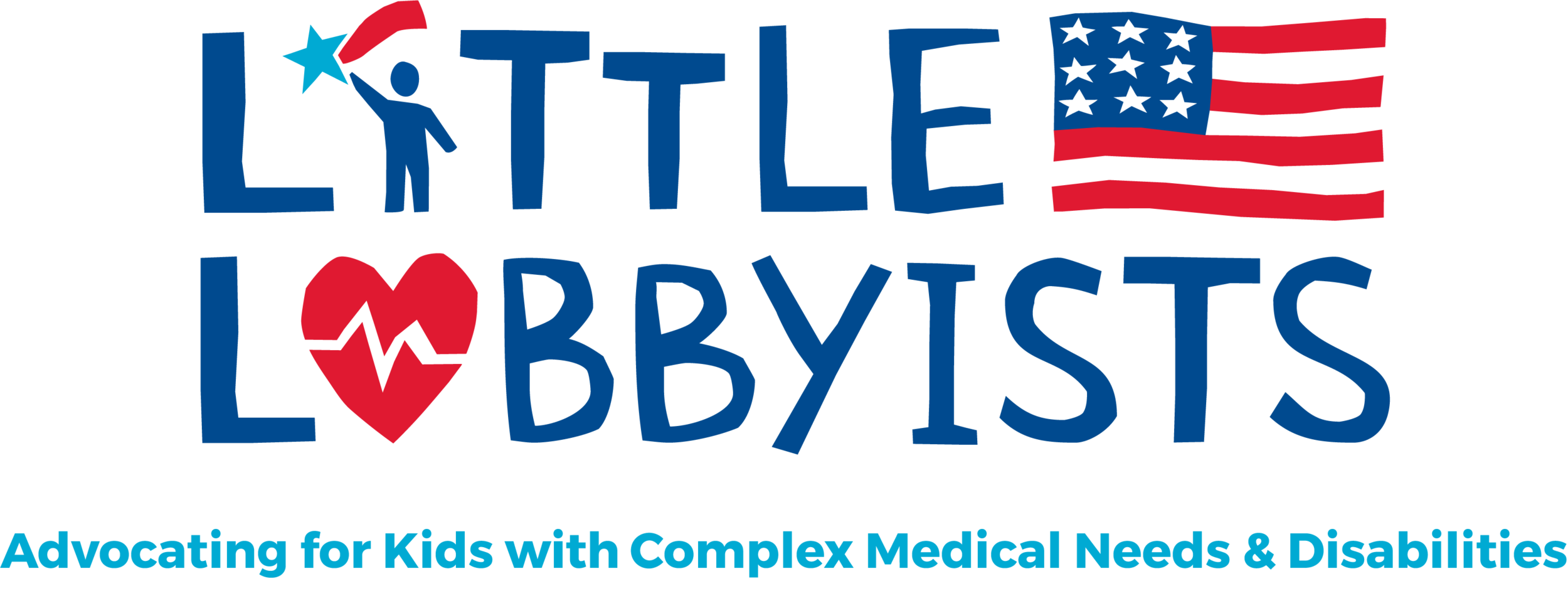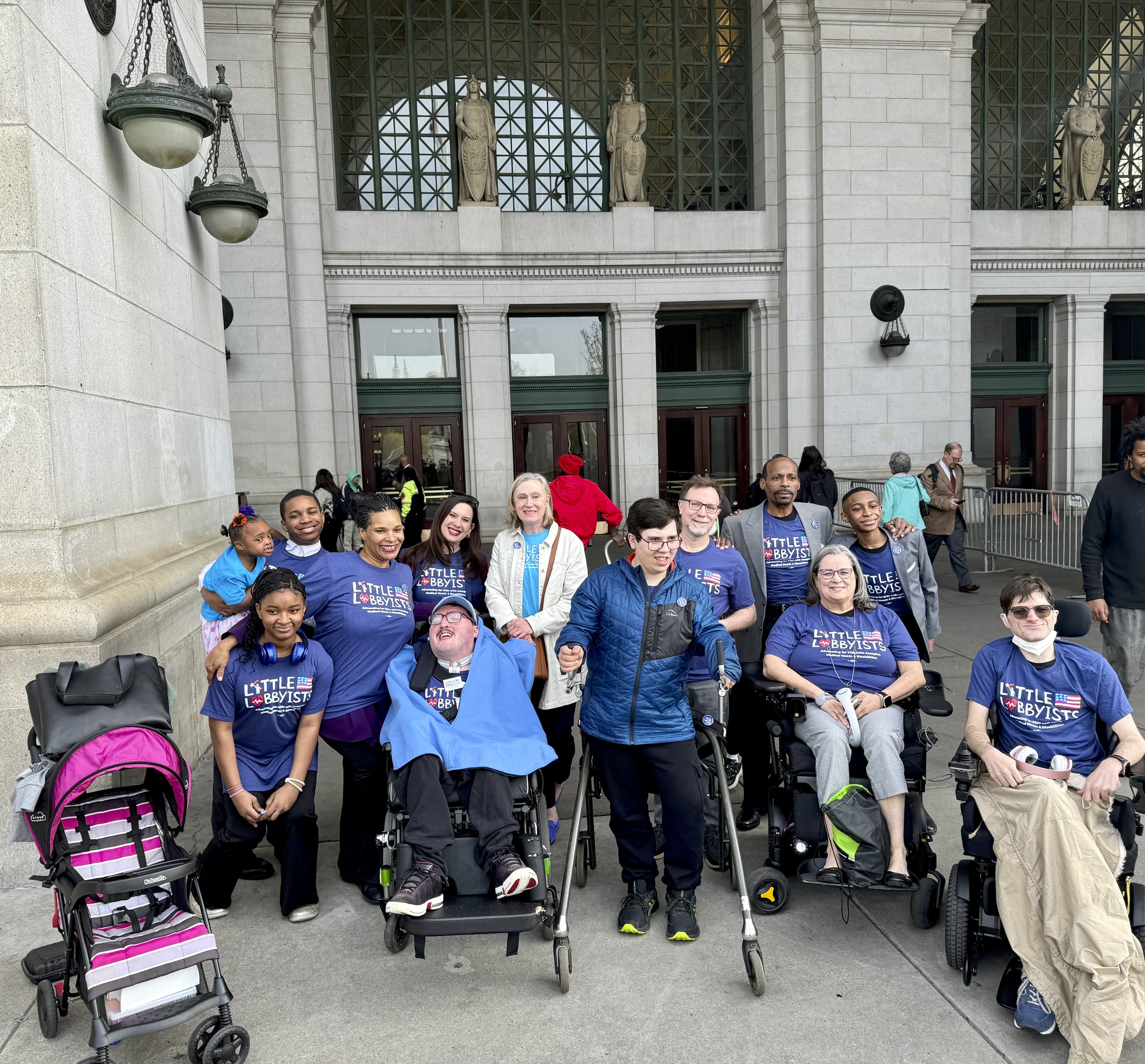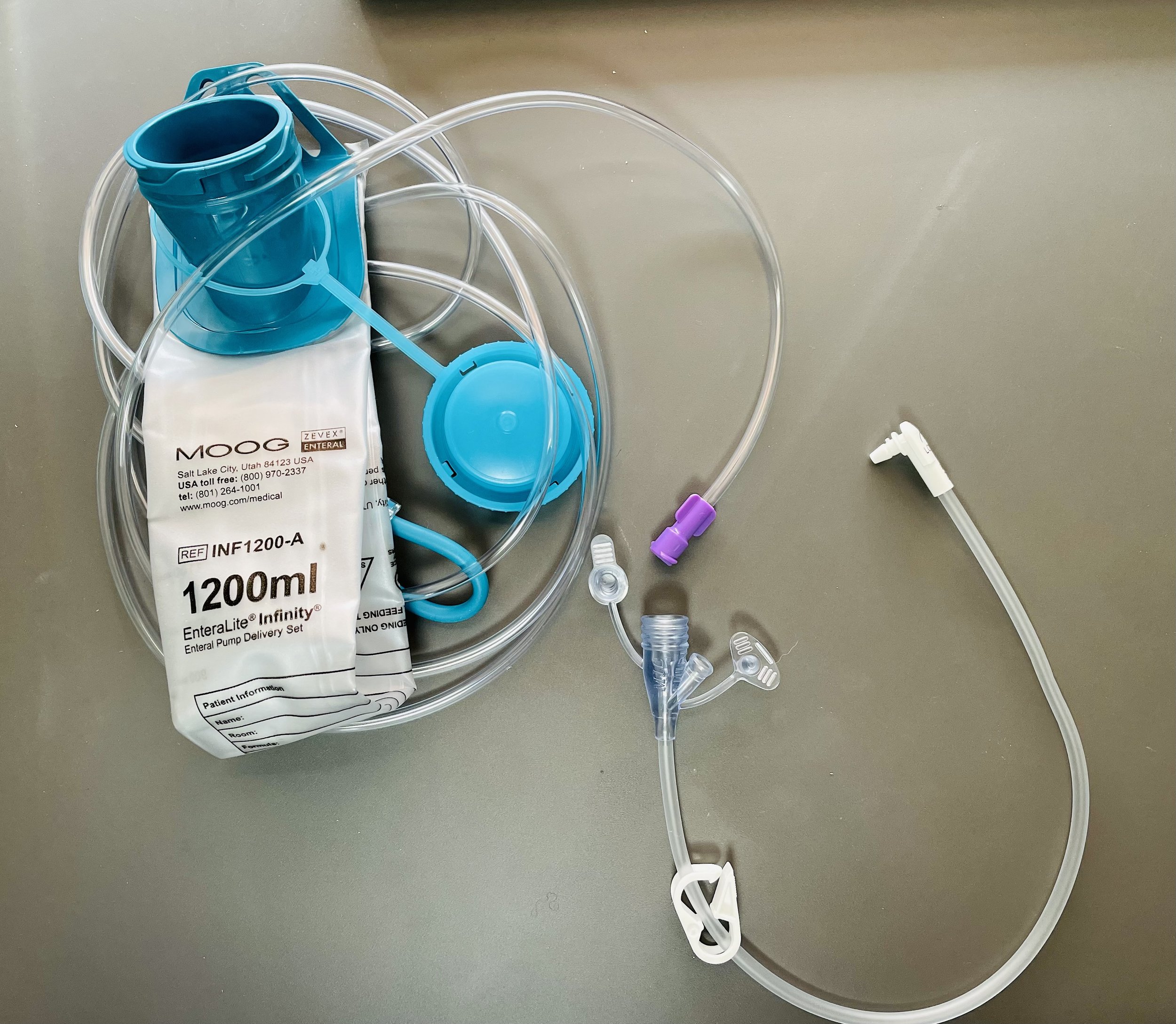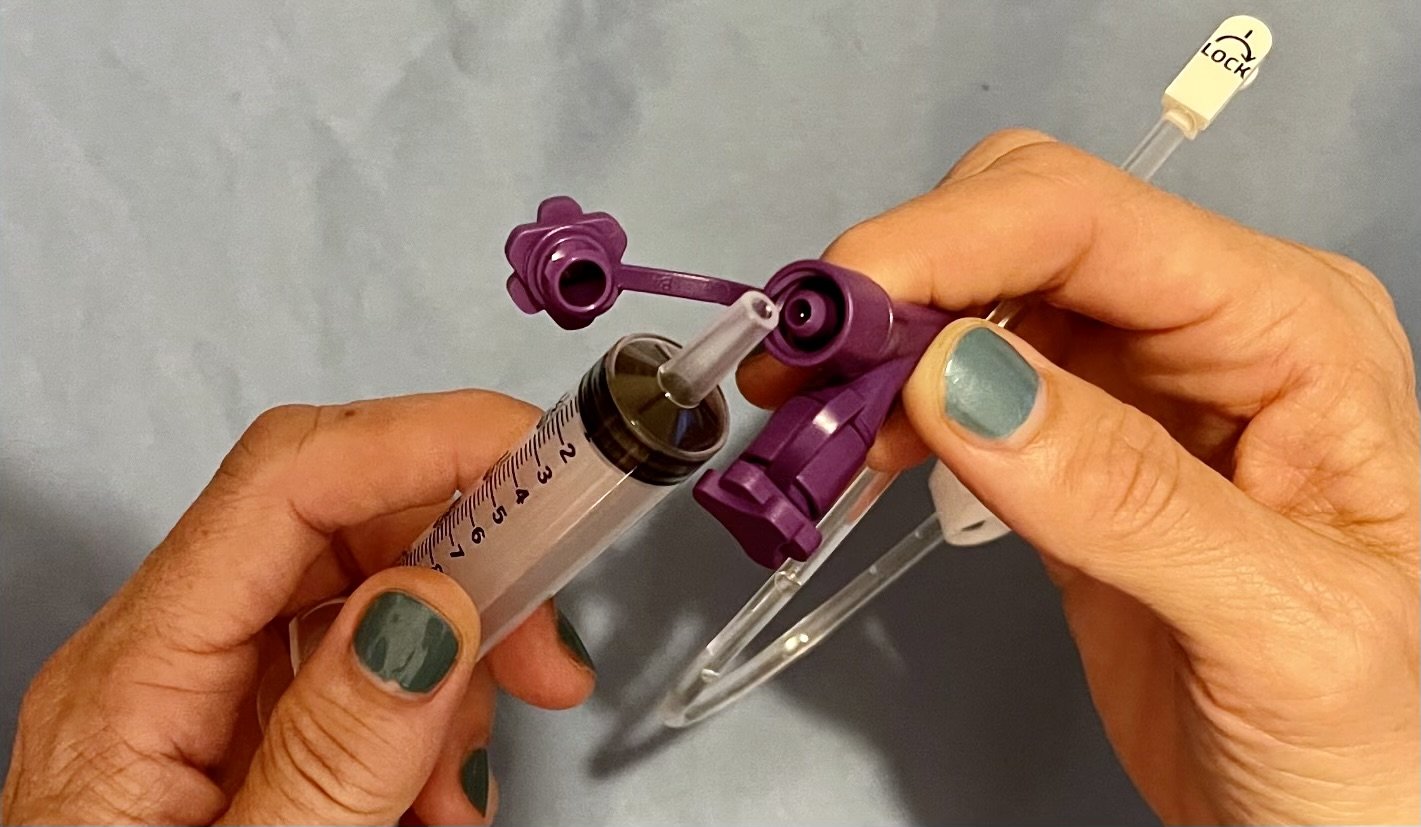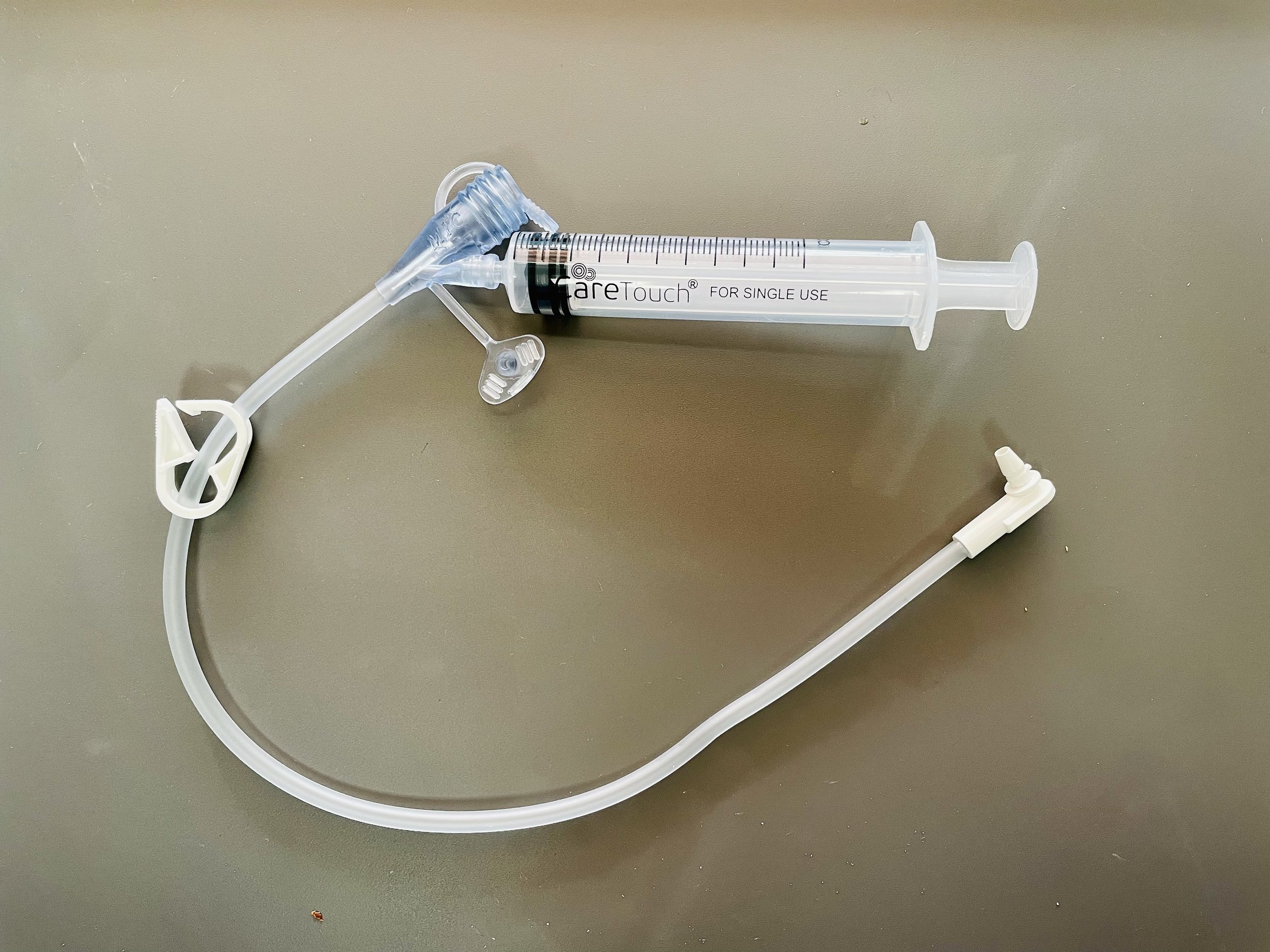Little Lobbyists families outside Union Station before the rally. We are wearing our blue logo shirts with our name in white letters and the graphics of a child touching a shooting star, heart with an EKG line, and the American flag. Union Station’s gray granite walls and decorative pillars and light sconces are behind us. We are using a variety of mobility devices.
“The work you do matters. You are there for families when they need you most — providing comfort, strength, and compassion that inspire us all. Your devotion to the people and communities you serve represents the best of America’s character, and we will always stand with you, ensuring you are seen, valued, and rewarded fairly for the work you do.”
– President Joe Biden, Proclamation on Care Workers Recognition Month
The White House proclaimed April National Care Workers Recognition Month. To celebrate, Little Lobbyists joined the Care Coalition for a week of events highlighting why Care Can’t Wait! It was an awesome week, and our Little Lobbyists families turned out to participate in every event:
Rally for Care: The leaders of the Care Coalition, including Little Lobbyists’ Executive Director Elena Hung, made the case for care: “...support care champions who fight for HCBS, care champions who fight for our disabled children. Ask your friends and family to join us. We can do this. We have done it before, and we can do it again!” President Biden joined us, giving a rousing speech re-confirming his support, “Care workers represent the best of who we are in America. We look out for one another in America. We leave nobody behind.”
Congressional Town Hall on Care: Lawmakers, union representatives and the acting Secretary of Labor met with advocates and took questions. Little Lobbyists mom Jeneva Stone asked Senator Elizabeth Warren what she would say to those who tell us we can’t afford home care. Senator Warren gave a passionate response in which she emphasized that caregiving is part of our country’s infrastructure. She began by giving a shout-out to our Little Lobbyists families, “who are there in every fight!”
White House Care Convening: Key members of the Administration, including Secretary of Health & Human Services Xavier Becerra and the Director of the Domestic Policy Council Neera Tanden, detailed steps the Biden Administration has already taken to build a robust care infrastructure, and emphasized their commitment to do more. The leaders were joined by a diverse panel of caregivers and recipients, including an AAC user and family caregiver, who attested to the urgency of our nation’s worsening care crisis.
Care Can’t Wait is a national coalition committed to building a 21st century care infrastructure, including investments to expand access to childcare, paid family and medical leave, and home-and community-based services, and to ensure good jobs for the care workforce. Care Can’t Wait believes that “care is at the center of our families, communities, and economy.”
Little Lobbyists is a part of the Care Coalition, shining a spotlight on the needs of our kids: access to community-based long-term services and supports that keep our children in their homes and communities, where they belong; making policymakers aware that our kids with complex medical needs & disabilities require licensed and fairly compensated care workers, including home nurses and other home care and direct support professionals; and advocating for the home care needs of disabled adults, because we want our disabled children to survive and THRIVE into adulthood.
Enjoy this slideshow of our families in action! Visit our website! Follow us on social media (@LittleLobbyists on Facebook, Instagram, X, and Threads) and join our Facebook community page! Better yet, become part of our movement by sharing your child’s story with us!
Image descriptions will appear as the cursor hovers over the photo.
